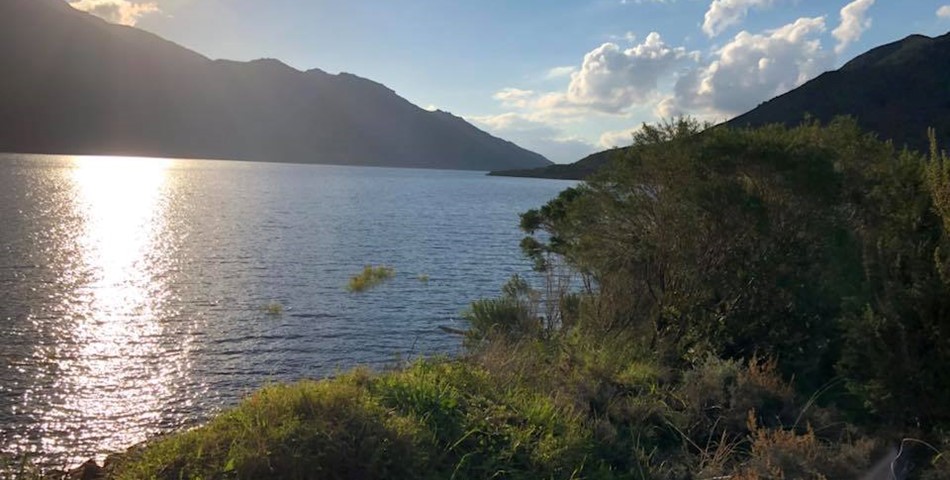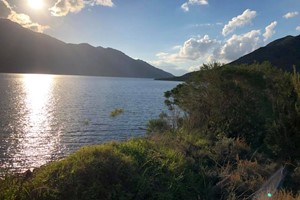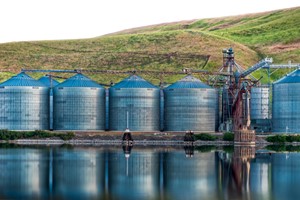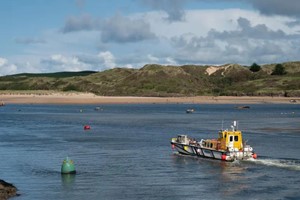Nations that border around the Caspian Sea recently held a convention where they began to negotiate to resolve long-standing differences and concerns that include access to sea floor resources as well as fishing. However, windblown evaporation from both the Caspian Sea and Black Sea blows over mountains located south of the Black Sea and southwest of the Caspian and provides an important source of water for regions such as Eastern Turkey, Syria, Iraq, northwestern Iran and even Kuwait. The increasing demand for potable water in these regions may require increased evaporation from these seas.
In the distant geological history of the earth, one theory suggests that perhaps over 100,000-years ago and earlier, that the Black Sea was an inland sea and without any waterway connection to the Aegean and Mediterranean Seas. Its elevation has also been theorized to have been several meters above maritime sea level until a cataclysmic event opened a channel that led to the formation of the Sea of Marmora, Bosporus River and Dardanelles channel. During the northern summer, winds that blow over the northeastern Atlantic Ocean carry moisture over most of Europe and Western Russia, north of the Black Sea. It is during the northern winter months when rainfall that occurs in mountains located south and east of the Black Sea and southwest of the Caspian Sea. Among the people who depend on this rainfall is a population of some 50-million in Turkey located east of the Sea of Marmora, 82-million in Iran, 39-million in pre-war Iraq and 18-million in pre-war Syria, 10-million in Azerbaijan, 4-million in Georgia and 3-million in Armenia. There is potential conflict between and amongst nations of the region as a population exceeding 200-million people seeks access to potable water.
International negotiations
For several nations in the region, seawater desalination is not an option. One alternative method by which to increase the availability of potable water would be to increase the rate of evaporation from the Black Sea and Caspian Sea. The variety of methods that could achieve such a result would require discussion between and negotiation amongst nations that border around the Black Sea and Caspian Sea. One possible option would be the construction of a navigation lock at Istanbul, where the Back Sea flows into the Bosporus, to raise Black Sea water level by perhaps 0.5-m or more. Raising the sea level would also increase the water surface area from which windblown evaporation would occur and move toward the Pontic Mountains of Eastern Turkey where increased precipitation might be possible. Nations that border around the Caspian Sea would also need to discuss and negotiate raising the water level of that sea by perhaps 0.5-m or more, with Sea of Azov being the source, to increase the available evaporative surface area to allow winter winds to push increased evaporation toward the rain shed areas of the Caucus Mountains and mountains in Turkey and Iran.
Weather patterns
Several years ago, a weather researcher at Washington State University explained that while Vancouver, London and Paris winter temperatures rarely dropped below the freezing point, Calgary and Winnipeg experienced winter temperatures down to minus 40-degrees C. He advised that Canadian coastal mountains prevented warmer North Pacific winter air from moving inland. The high mountains to the west of the Caspian Sea produced the same result of cooler winter temperatures to the east of the sea, with the difference is air density causing winter air to move westward across the Caspian and Aral Seas and picking up evaporation. Lake effect winter snowfall occurs on land next to the North American Great Lakes due to winds picking up evaporation from the non-frozen lakes. That occurrence suggests that increasing surface water temperature in the Caspian Sea could increase winter evaporation that winds would carry to the high mountains located west of the sea. There would be need for further research to explore the possibility of using existing winter weather patterns in the Caspian Sea region to increase the amount of humidity that prevailing winds could carry westward from the sea to the high mountains.
Option of a channel
There is low-lying terrain between Sea of Azov and Caspian Sea, allowing for the possible excavation of a channel between the 2-bodies of water. The fact that the surface of the Caspian Sea is some 28-m below the surface of Sea of Azov could directly and perhaps indirectly allow gravity to move a comparatively small and steady flow of water into the Caspian Sea. While the Volga River that flows through the city of Volgograd empties into the Caspian Sea, the Don River that flows close to Volgograd empties into Sea of Azov. The may be the option of diverting a portion of the water that flows through the Don River, to flow into the Caspian Sea. While most of the Black Sea north of Turkey is deeper than 200-m, the Caspian Sea has the advantage of a greater area that is shallower than 200-m. After sunrise, the surface of shallow water heats up faster than the surface of deep water and warmer shallow water offers a higher rate of evaporation. Marginally raising water levels in the Caspian Sea would significantly increase the surface area of shallow water.
Artificially increasing evaporation
In tropical regions, surface water temperature can often rise above 26-degrees C and cause cyclones and tornadoes to form offshore. The swirling updrafts of air pick up water droplets that are carries skyward to form clouds. It may be possible in shallow coastal water, to artificially create a warmer region of water of perhaps 20-m diameter, using any of waste industrial heat, concentrated solar thermal energy or geothermal heat. Air would rise upward over the warmer area of water with the prospect of causing a waterspout that could carry water droplets to higher elevation. Artificially generated waterspouts that carry evaporation skyward could increase rainfall in the watershed areas of mountains located to the west and southwest of the Caspian Sea, as well as to the south of the Black Sea. The shallow southeastern area and shallow northeastern area the Caspian Sea would be attractive locations to artificially generate waterspouts that could pump additional winter moisture into westward moving clouds. Alternate methods of increasing evaporation would include offshore water fountains that spray fine mist upward. Pontoon mounted vertical-axis air turbines installed above the water surface could pump air and moisture upward.
Caspian Sea sturgeon
The Caspian Sea is home to the cold water, bottom feeding Sturgeon fish that spends most of its life near the bottom of the Sea. Mature sturgeon will migrate north and upstream into the Volga, Kuma, Emba and Ural Rivers to spawn, with female sturgeon being a prime source of caviar. A large number of artificially warmed small areas of sea surface and located in the shallow coastal depths would sustain the winter operation of cyclonic waterspouts that would transfer evaporation into the winds that blow toward watershed regions in the high mountains.
Regional negotiations
During the northern winter, prevailing winds blowing across the Caspian Sea pick up evaporation that is carried over mountains located to the east and southeast of the Black Sea, where precipitation occurs. Increasing evaporation from the surface of the Caspian Sea to increase rainfall in mountains west and southwest of that sea will require negotiation amongst several governments in the region. The list would include governments of Russia, Turkmenistan, Iran, Azerbaijan, Armenia, Georgia, Turkey, Iraq and Syria. Nations that urgently need additional rainfall in the headwaters of their rivers would include Iran, Iraq, Turkey, Azerbaijan, Armenia, Georgia and Syria. Instead of initiating armed conflict amongst each other due to dwindling water resources, the governments of these nations could seek to cooperate to discover and implement methods that could increase rainfall in the mountains that are the water shed locations of the headwaters of rivers that flow through the region. Increasing evaporation from the Caspian Sea will require the combination of diverting extra water from either the Sea of Azov or Don River to raise water levels and increase the evaporative surface area along with the operation of several hundred waterspouts to spray massive volumes of water upward.
Conclusion
- Winter winds that blow across the Caspian Sea cause evaporation that becomes rainfall over the high Taurus Mountains that extend from Eastern Turkey through Iraq and into the Zagros Mountains of Iran.
- That winter rainfall sustains a population of some 200-million who live in the region located between the Mediterranean and Caspian Seas.
- A navigable channel could carry water from the Sea of Azov into the Caspian Sea, to allow for an increase in overall water levels in the sea.
- There will be need for further research into increasing winter evaporate from the Caspian Sea, to increase rainfall in mountains located to the west of the sea.
- Governments in the region would need to cooperate and collaborate in matters that pertain to the Caspian Sea and its possible future role in indirectly providing potable water to the region’s growing population.














